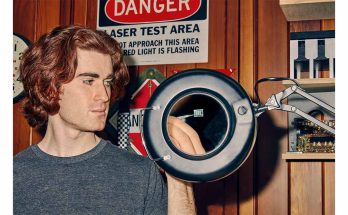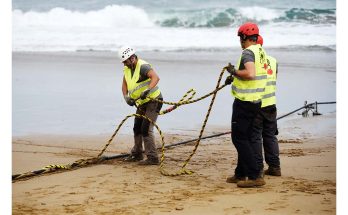“These underwater cables can improve tsunami detection”
MIT Technology Review, February 21, 2023
Computing
by Christian Elliott
“Telecom companies have long resisted letting scientific sensors piggyback on their subsea cables—until now.”
The residents of Vanuatu, a clutch of islands in the South Pacific, are no strangers to flooding. The ocean floor around them is frequently shaken by tsunami-triggering earthquakes.
Some advance warning could give residents enough time to get to higher ground before tsunamis strike, saving lives. But the world’s 65 active deep-ocean buoys, which are designed to detect the waves, are too sparsely distributed to provide that type of warning for Vanuatu.
The Joint Task Force for Science Monitoring and Reliable Telecommunications (SMART) Subsea Cables, a United Nations initiative, aims to solve that problem by equipping new commercial undersea telecom cables with simple sensors that measure pressure, acceleration, and temperature. The sensors could be added to the fiber-optic cables’ signal repeaters—the watertight cylinders full of equipment that are used to amplify signals every 50 kilometers or so. With cables providing for the sensors’ power and data transfer needs, scientists could collect information about the seafloor at an unprecedented scale—and pass on data about potential tsunamis far faster than is currently possible.
Adding sensors to undersea cables isn’t a new idea. Bruce Howe at the University of Hawaii, for example, who chairs the task force, operates the deepest science observatory in the world using an abandoned telecom cable located 100 kilometers north of Oahu. But convincing the $5 billion-a-year subsea telecommunications industry to integrate scientific sensors into the expensive hardware it installs has been an uphill battle for a decade, Howe says.
About the Author:
Christian Elliott is a freelance science journalist based in Chicago.
I’m a science and environmental reporter and audio producer based in Chicago, Illinois. Currently, I’m producing season five of NASA’s Curious Universe podcast as the Goddard Space Flight Center’s audio storytelling intern.
As a freelancer, I’ve reported and produced audio stories for WBEZ, Chicago Public Media, Deutsche Welle (DW) and WVIK, Quad Cities NPR. I’ve written science feature stories for National Geographic, Scientific American, Undark, Hakai, Discover, Sierra, Smithsonian and MIT Technology Review. My reporting has been republished in The Atlantic, Slate, Mother Jones and Popular Science.
I’m a 2022 graduate of Northwestern University’s Medill School, where I received a master’s degree in science journalism. I was a recipient of the Pulitzer Center‘s 2022 Climate Science reporting fellowship.
Check out a selection of radio and podcast stories Christian Elliott has worked on as a producer or reporter.
See also in Internet Salmagundi:





